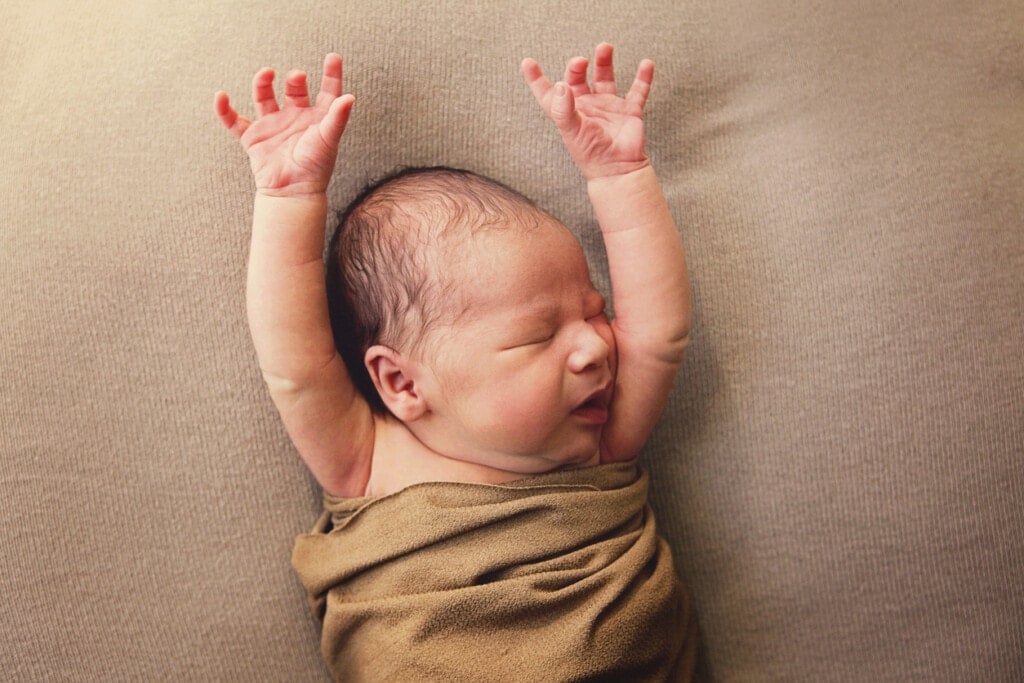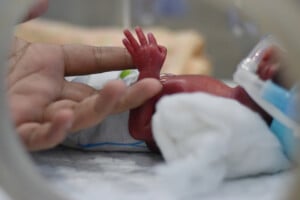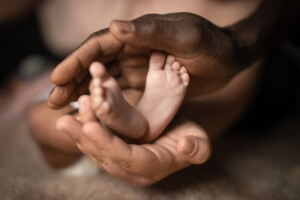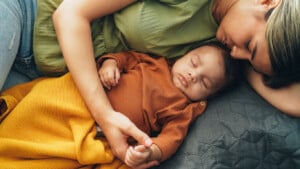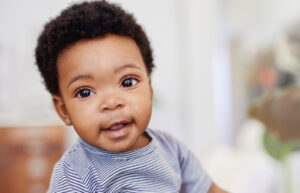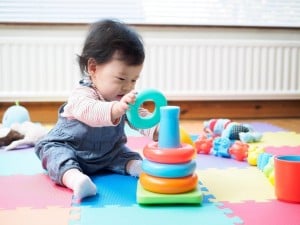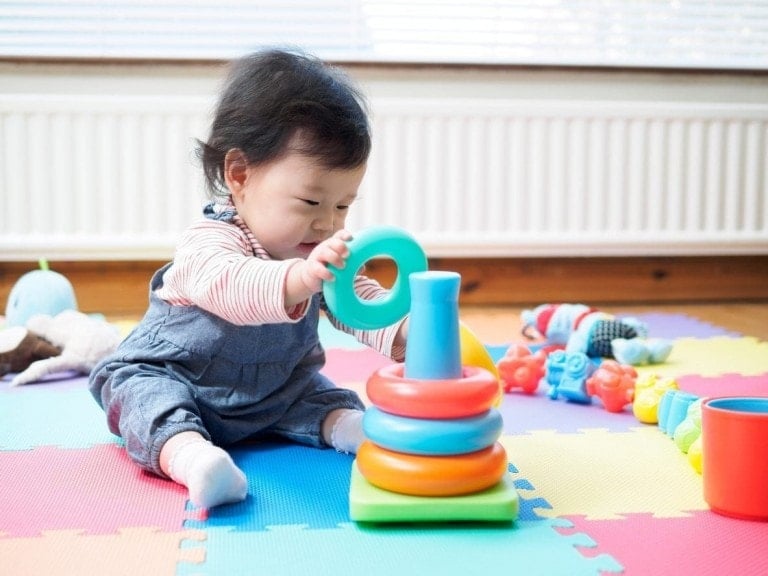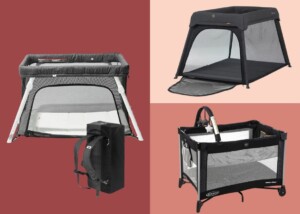Reflexes happen automatically; they are involuntary movements. They help babies adapt and survive in their new environment outside their mommy’s uterus. Primitive reflexes are the normal infant reflexes a baby is born with, and they are essential to a newborn or baby’s development. One primitive reflex is the Moro reflex (or startle reflex). It’s a protective reaction when loud sounds, bright lights, sudden movements, or abrupt changes in a baby’s body or head position startle them. It most commonly happens when a baby feels the sensation of falling, and you may see baby twitching in their sleep. You will notice your doctor checking for the Moro reflex at your baby’s initial and following visits, as it indicates that the baby’s nervous and muscular systems are working correctly.1,2,3
What Is the Moro Reflex?
Newborns are born with certain reflexes. When a baby is startled, and the Moro reflex kicks in, they will throw their arms out to the side (away from their body), open their hands and fingers, and extend their neck, making the head go backward and causing the back to arch. After this initial phase of the reaction, baby will pull their arms back to their body, clench their fists, put their hands by their chest, and then return them to their sides. Sometimes, their legs will kick away from their body and return. If the legs are involved, baby will return to an almost fetal position before relaxing again (occasionally called the newborn scrunch). Baby may cry loudly when they activate the Moro reflex, but not always.1,5
This process of the startle reflex happens in a matter of seconds. But when you see it for the first time, you will recognize it because it will probably startle you, too. Your provider measures the innate newborn reflexes to see if your baby is meeting the correct milestones in their growth. While baby is lying on the exam table, you may notice your doctor pulling their arms up from their chest. This action will activate the startle reflex, which is one way the doctor can measure baby’s reaction. The Moro reflex is usually weaker in preterm babies due to their lower muscle tone and slower arm recoil. If the reflex is absent, it could indicate other problems with the baby.1
What Triggers the Moro Reflex?
When a baby is startled, you will see the Moro reflex. Ordinarily, it comes from sudden stimuli like sharp body movements, harsh noises, etc. Older siblings can often startle a baby as they run and play or bump into baby’s bed or swing. Family pets can sometimes cause it, mostly by accident, with barking and quick movements. Babies can even startle themselves when they have a loud cry. Some describe the reflex as a baby twitching in their sleep because they will have a slight startle reflex while sleeping, not cry, and go back to sleep. It’s almost like watching an animal dreaming — you see their legs moving like they’re running.5
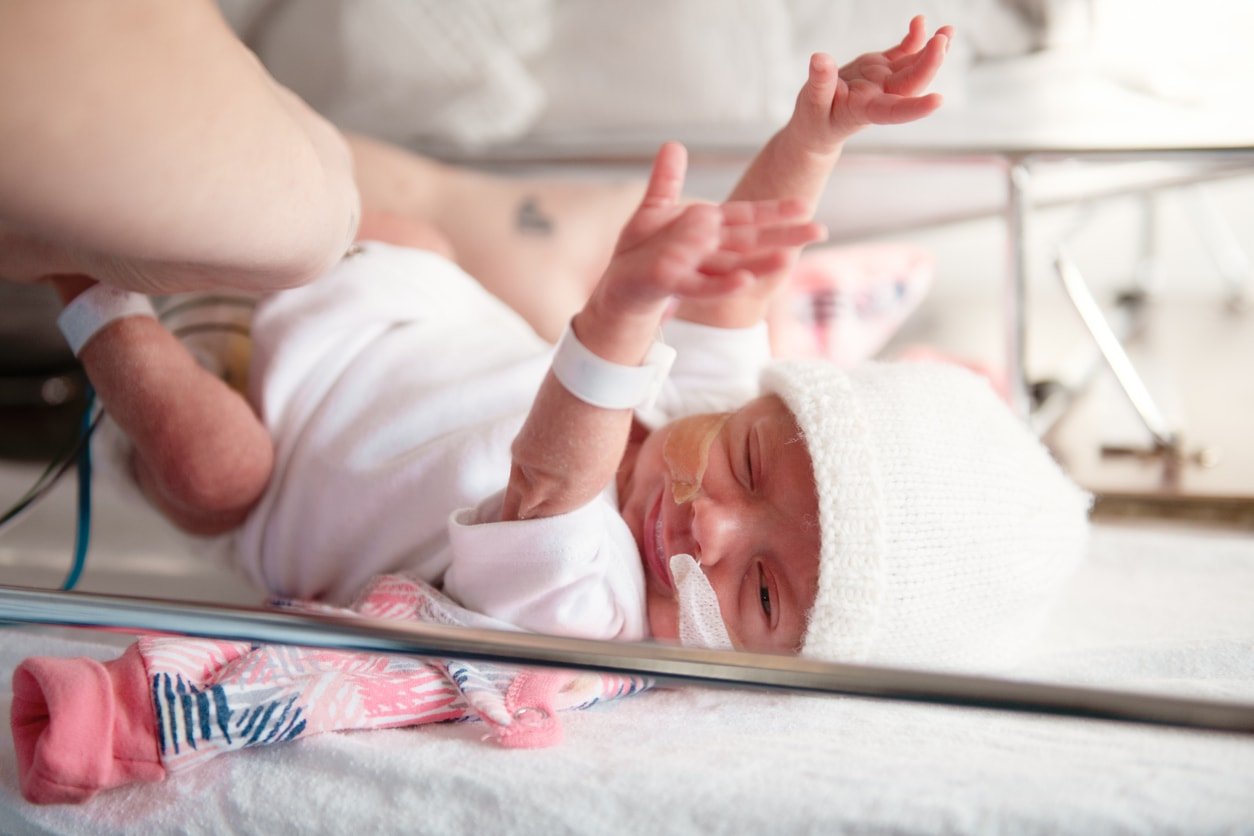
When Does the Startle Reflex Go Away?
Typically, the Moro reflex starts to disappear around 2 to 3 months of age. It’s usually gone entirely by 6 months. These time frames can differ for some babies if they are premature or have other developmental issues. We can see the startle reflex in the womb as early as 25 weeks gestation. Isn’t that amazing? Babies can actually startle while in the uterus — that would be one heck of a kick-punch combination for mom to feel!1
If the reflex is absent at birth or extends longer than six months, this can indicate a problem in the child’s nervous or muscular system or development, and they may need further testing. If baby only seems to have the reflex on one side of the body, this also indicates a concern. Your doctor will keep you apprised of any developments and let you know when/if you need to worry. Here are some possible problems with or reasons for no startle reflex:1,8
- An injury during the birthing process
- A congenital brain malformation
- A lack of oxygen (severe asphyxia) to baby during birth
- A brain bleed or intracranial hemorrhage
- An infection
- A weakness in the muscles
- A diagnosis of cerebral palsy
How To Keep Your Baby From Getting Startled
Many parents feel frustrated when something startles their sleeping baby, activating the Moro reflex and upsetting or waking baby from sleep. While the startle reflex is totally normal, there are a few ways you can help keep your baby from getting startled:
- Swaddle your baby for sleep
- Keep your baby as close to your chest as possible while lowering them
- Try to keep baby’s head just a little above the body so their back will hit first before their head
When putting baby to sleep, it also helps to place them in a quiet, dark, and comfortable area. However, you cannot prevent or stop the Moro reflex from happening.6 If you have any concerns about your baby’s startle reflex, ask your provider.
After baby has been startled, you can comfort them by holding them close and making them feel protected. This also promotes attachment to your baby and a feeling of security for them. If the stimulus that caused the reflex was a loud noise or bright light, you can help soothe them by changing your surroundings to a quiet, dimly lit area.1,7
The Moro reflex might seem a little scary, but as long as you know what it is, you will feel in control again. You may even feel comforted instead of surprised by it! Remember that newborns have innate reflexes, so try to think of it as your baby’s first attempt at protecting themselves and learning a form of balance. Not to mention, the Moro reflex is one of the first milestones in their physical and mental development. It is a natural reflex that babies have at birth, and it will go away on its own as baby grows.
